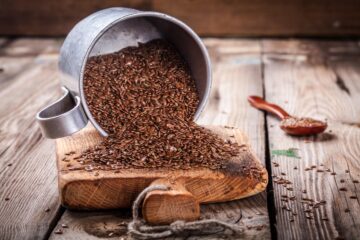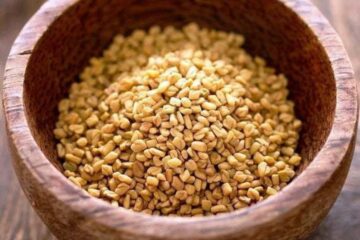Name:
The common name is Saw Palmetto, and its scientific name is Serenoa repens.
Description:
Saw Palmetto is a small palm tree, typically reaching heights of 2-4 feet, but can sometimes grow taller in ideal conditions. It has a sprawling growth habit and often forms dense thickets. The palm has fan-shaped leaves with spiny-toothed stalks that can resemble a saw, hence the common name. It produces white flowers and yellow to black berries.
Medicinal Uses of Saw Palmetto:
- Benign Prostatic Hyperplasia (BPH): The most common medicinal use of Saw Palmetto is for the treatment of lower urinary tract symptoms related to benign prostatic hyperplasia (BPH), which is an enlargement of the prostate gland. Studies suggest that Saw Palmetto might inhibit the enzyme 5-alpha-reductase, which plays a role in the conversion of testosterone to dihydrotestosterone (a
hormone that stimulates the prostate to grow). However, research results are mixed. A notable study, conducted by the National Center for Complementary and Integrative Health (NCCIH), found that even high doses of Saw Palmetto extract didn’t effectively alleviate symptoms of BPH compared to a placebo. This study can be found at https://www.nccih.nih.gov/research/research-results/saw-palmetto-extract-does-not-reduce-symptoms-of-prostate-enlargement. Therefore, it’s essential to consult a healthcare provider before using Saw Palmetto for BPH. - Hair Loss: Some evidence suggests that Saw Palmetto might block the enzyme 5-alpha-reductase and therefore could potentially be used to treat certain types of hair loss. According to a pilot study published in the Journal of Alternative and Complementary Medicine, 60% of participants with male pattern baldness had an improvement in their symptoms after using Saw Palmetto in combination with another supplement. However, more research is needed in this area to draw concrete conclusions. The study can be accessed here: https://www.liebertpub.com/doi/abs/10.1089/acm.2002.8.143.
- Chronic Prostatitis: Chronic prostatitis or chronic pelvic pain syndrome is another condition for which Saw Palmetto has been explored as a treatment option. A study reported in the Urology journal indicated a significant improvement in urinary symptoms and pain in comparison with placebo. This study is accessible at https://www.ncbi.nlm.nih.gov/pubmed/15245961. However, more research is needed to confirm these findings.
- Bladder Disorders: Saw Palmetto is traditionally used to treat a variety of bladder disorders, including bladder inflammation and associated urinary symptoms. While this use is based largely on traditional use, scientific studies have not definitively confirmed its effectiveness in treating bladder disorders.
- Coughs and Respiratory Complaints: Historically, Saw Palmetto has been used for coughs and bronchitis due to its supposed mucolytic and expectorant properties. It’s thought that components in Saw Palmetto can help break up mucus, making it easier to expel, and hence, easing coughs. However, as of now, these effects have not been confirmed by rigorous scientific studies.
- Hormone Imbalances: There is a belief that Saw Palmetto may impact hormone levels, and it has been used to treat conditions like polycystic ovary syndrome (PCOS) and other hormonal imbalances. However, research in this area is limited and inconclusive. According to a report from the National Institutes of Health (NIH) https://www.nccih.nih.gov/health/saw-palmetto, there isn’t sufficient scientific data to determine if Saw Palmetto can help with these conditions.
- Anti-Inflammatory Properties: Saw Palmetto has been used in traditional medicine for its purported anti-inflammatory properties. Some early research suggests that certain compounds in Saw Palmetto can inhibit the biosynthesis of inflammation-causing prostaglandins. However, more research is needed to fully understand this potential benefit.
Origin and Distribution:
Cultivation and Care:
Saw Palmetto grows best in sandy or limestone soils with full sun to partial shade. It is highly tolerant of drought, salt, and wind. Regular watering is beneficial, but the plant can survive extended dry periods.
Harvesting and Storage:
The fruits of Saw Palmetto are harvested in late summer and autumn when they are fully ripe. They can be dried and stored in airtight containers for later use.
Uses:
Culinary Uses: The fruits of Saw Palmetto were used as a food source by Native Americans and early settlers, although they are not commonly consumed today.
Medicinal Uses: Saw Palmetto is primarily known for its use in reducing symptoms of an enlarged prostate (benign prostatic hyperplasia or BPH). However, the effectiveness of Saw Palmetto for this use is not clearly proven. More information can be found on the National Center for Complementary and Integrative Health’s website at https://www.nccih.nih.gov/health/saw-palmetto.
Other Uses: The plant is often used in landscaping for its low maintenance requirements and resistance to difficult growing conditions.
Safety Information:
Historical and Cultural Significance:
Saw Palmetto was used by Native Americans for food and to treat urinary and reproductive issues. During the early 20th century, it was listed in the US Pharmacopeia as a treatment for a variety of conditions, including urogenital issues.
Conservation Status:
As of now, Saw Palmetto is not listed as endangered or at risk by any major conservation organization.




